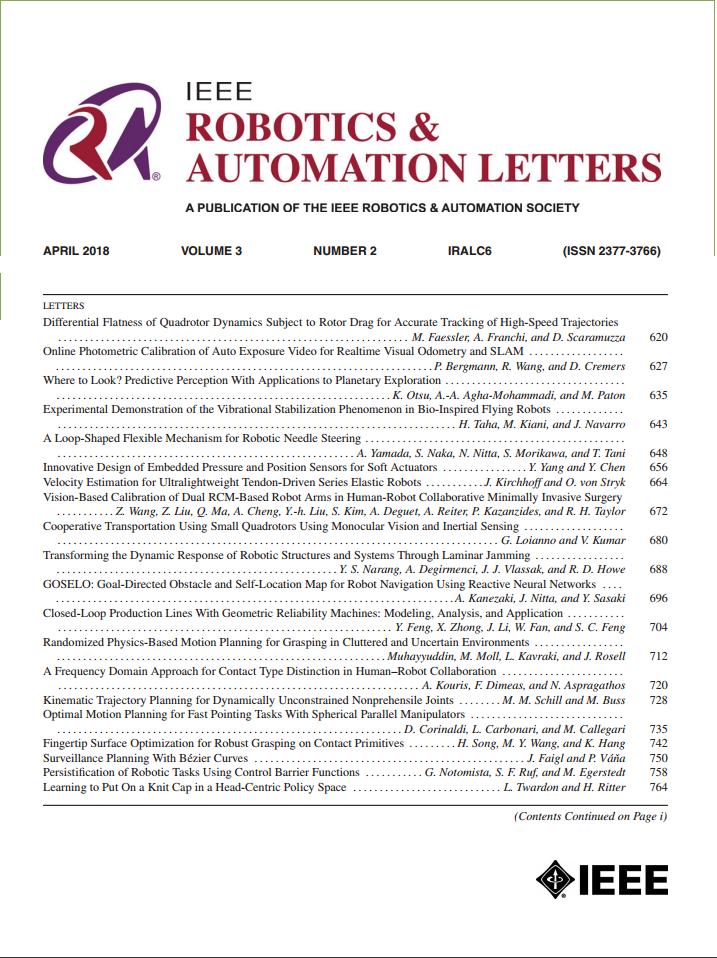机器人姿态伺服的最大允许TCF校准误差
IF 4.6
2区 计算机科学
Q2 ROBOTICS
引用次数: 0
摘要
机器人姿态伺服的目的是将机器人末端执行器移动到目标姿态。闭环伺服系统可以容忍较小的TCF(刀具控制架)校准误差,并通过多次位姿测量和位姿调整准确地达到目标位姿。然而,最大允许TCF校准误差仍然是一个悬而未决的问题。本文论证了机器人位姿伺服的必要条件是TCF标定误差角小于60°,且对TCF标定误差的平移分量没有限制。其次,提出了一种改进的位姿伺服方法,解决了TCF误差大与机器人工作空间有限之间的冲突。该方法引入了一个比例因子来限制机器人工作空间内的调整范围,确保了更大的鲁棒性。最后,选择机器人辅助舱室对接作为实验验证案例。仿真和物理实验验证了TCF标定的最大允许误差。对比实验验证了改进位姿伺服方法的鲁棒性,在TCF标定误差较大的情况下实现了座舱对接。本文章由计算机程序翻译,如有差异,请以英文原文为准。
Maximum Allowable TCF Calibration Error for Robotic Pose Servoing
Robotic pose servoing aims to move the robot end-effector to the target pose. Closed-loop servo systems can tolerate a small TCF (tool control frame) calibration error and accurately reach the target pose through multiple pose measurements and pose adjustments. However, the maximum allowable TCF calibration error remains an open question. This paper demonstrates that the necessary condition for robotic pose servoing is a TCF calibration error angle of less than 60 degrees, with no limit on the translational component of the TCF calibration error. Next, an improved pose servoing method is proposed to address the conflict between the large TCF error and the limited robot workspace. This method introduces a scaling factor to limit the adjustment range within the robot workspace, ensuring greater robustness. Finally, robot-assisted cabin docking is selected as an experimental validation case. Simulation and physical experiments validate the maximum allowable TCF calibration error. Comparative experiments confirm the robustness of the improved pose servoing method, achieving cabin docking despite significant TCF calibration errors.
求助全文
通过发布文献求助,成功后即可免费获取论文全文。
去求助
来源期刊

IEEE Robotics and Automation Letters
Computer Science-Computer Science Applications
CiteScore
9.60
自引率
15.40%
发文量
1428
期刊介绍:
The scope of this journal is to publish peer-reviewed articles that provide a timely and concise account of innovative research ideas and application results, reporting significant theoretical findings and application case studies in areas of robotics and automation.
 求助内容:
求助内容: 应助结果提醒方式:
应助结果提醒方式:


